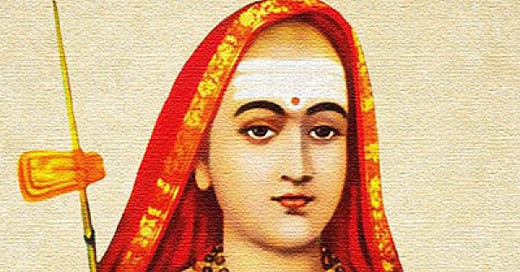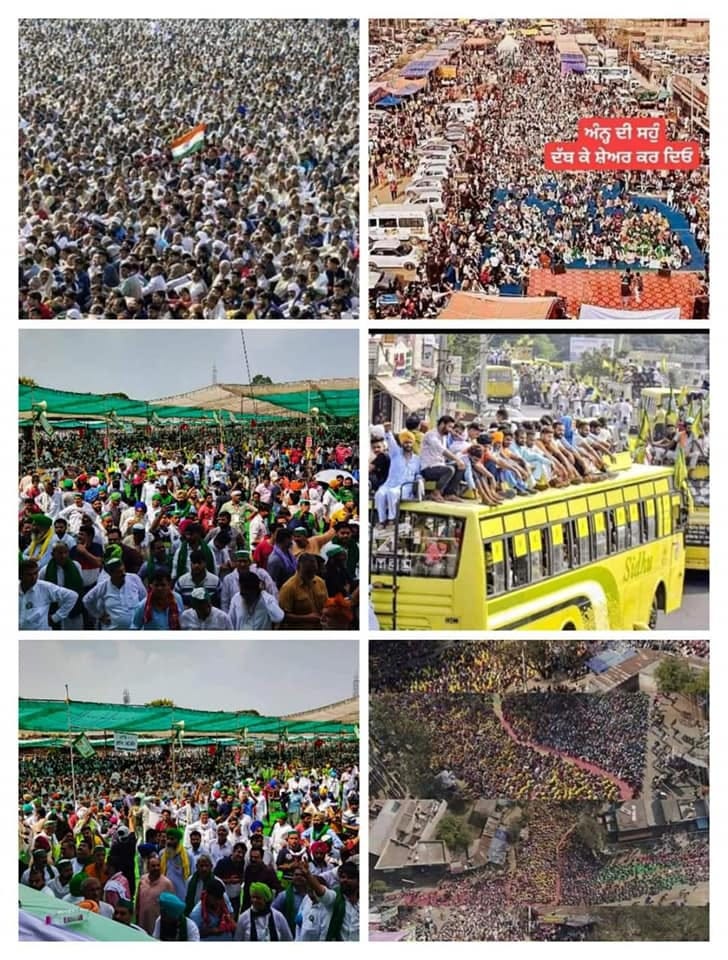Did Adi Shankaracharya Disrupt And Divide People Who Once Believed In Oneness Of All Gods?
That and the world's largest carbon removal plant switching on its wheels, french songwriter and her music, paracetamol's disastrous effects on pregnant women, four lac protesters...
I can't offer my heart
Over and over again
Only to have those I want
Throw it aside and leave me
Asunder
I'm weak
I can't do this again
But I look and smile
And my heart beats again
And maybe I can do this
Once more
I'm weak
One day I'll find someone
Who I want who'll want me too
And maybe I won't feel so weak
Anymore
- u/hocuspocusgottafocus on r/poem
To stop temperatures rising by 1.5°C or even 2°C above pre-industrial averages, as per the Paris climate agreement, hundreds or thousands of billions of tonnes of CO2 will have to be removed from the atmosphere in the second half of the century. Currently, the only means of doing that is planting trees, an option that is not entirely without drawbacks. Trees burn in wildfires and can be cut down. When this happens, much of the carbon they store escapes. The Orca plant shows another way.

Adi Shankaracharya
Adi Shankaracharya was born in the 8th century CE and is credited with some 300 odd texts. Both of these are historically disputed but let’s keep the historicity aside for this discussion since Shankaracharya’s popularity, message and image continue to thrive and animate people even today. Most of his followers (just like any other followers of religious entities) hardly cared about when he was born or what he wrote and what his disciples who too went by his name wrote. I recently stumbled upon this article on Mata Amritanandmayi’s website and that’s why you’re reading about Adi Shankaracharya now. Usually, I don’t pay much attention to these sorts of articles on matters of religion since they all tend to deviate from the original texts just like Amish Tripathi’s book on lord Ram does. Forget Amish, take for instance how most of us imagine lord Ram to be vegetarian when in the original text he and his family were non-vegetarians who relished mutton, pork, chicken and peacock meat. Coming back to Mata Amritanandamayi’s website, the article says, ‘Sannyasis of Mata Amritanandamayi Math belong to the Puri Sannyasa tradition’ which Adi Shankara himself established. So Amritanandamayi and her institution know what they are saying. She truly enjoys across-the-aisle popularity in India and outside, probably greater than Shankara himself. The article on her website reads,
In Shankara’s time, there were innumerable sects following their own narrow philosophies and systems of worship. People were totally blind to the underlying common basis of the One God. For their benefit, Shankaracharya formulated the six sect system of worship which brought to the fore the main godheads – Vishnu, Siva, Shakti, Muruka, Ganesha and Surya. He also formulated the rituals and rites to be followed in most of the major temples in India.
It never came as a surprise to me to learn recently how Hinduism as a rigid entity was a recent creation1 since India was (and is even today) a vast stretch of land with people spread wide across its length and breadth; many of these groups for centuries must have never interacted with each other but sure would have had their version of gods, religion and spirituality. Our need to believe in a supernatural and all-powerful entity predates even the oldest religions existing today. Many religions have gone extinct or have been assimilated into others thereby slowly losing their traits and becoming extinct again. In the very beginning when these isolated people started to interact with each other they must also have found the other gods. The gods they didn’t know existed or even thought there existed other gods beyond their own. But since fear lies at the heart of most beliefs and most people fear falling out from god’s favours, they must have tried to rationalize the existence of these new gods along with their gods which invariably arrives at the oneness or the underlying common basis of all gods. There are gods, mine and yours, and there is the god of all gods or all gods are but avatars of one true god entity. This is epitomized in Shirdi Saibaba’s message of ‘Sabka Maalik Ek’ - there is only one god of all. And if you believe in this message of oneness you don’t find it hard to befriend another religious person. With this, a Hindu can befriend a Muslim and a Musalman can befriend a Hindu since the ultimate god is one and they are merely following different paths to the same god. They are but brothers on different paths. This is also similar to what is preached at Ramakrishna ashrams, at least that is what was taught to me when I used to frequent them. Now Mata Amritanandamayi calls this blind and writes how Adi Shankara for our benefit, formulated the six-sect system of worship which brought to the fore the main godheads – Vishnu, Siva, Shakti, Muruka, Ganesha and Surya. That to me reads like the creation of division and differences in people. Maybe Mata Aritanandamayi misinterpreted Shankara’s message and aims or more likely I’m reading it wrongly. Please write in comments and help me expand/explore this.
The article later mentions legends associated with Adi Shankara. One of which is related to his mother and himself.
When Shankara broached the topic of his embracing the Sannyasa way of life, his mother was reluctant to give him her permission and blessings. One day, however, when he accompanied his mother for a bath in the river, a crocodile caught hold of his leg and started dragging him. His mother could only stand and watch helplessly. Then Shankara called out to his mother, asking her to permit him to become a Sannyasi at least during these last moments of his life. She agreed and miraculously the crocodile let go of Shankara’s leg. To console his mother he promised her that he would come back to her at the time of her death and perform the last rites.
Shankaracharya was somewhere in North India when he came to know of his mother’s impending death. By using his Yogic powers, travelled through the air to reach her quickly. At her request, he granted her divine visions.
When he tried to arrange the cremation of his mother’s body, his relatives refused to help him on the grounds that as a Sannyasi he was not permitted to perform funeral rites. Normally this would have been a serious setback as a cremation involves rituals, which would require physical assistance by a few people. So Shankaracharya performed a miracle. He made a funeral pyre out of plantain stalks. After placing the body on the pyre he took some water and after chanting a few mantras he sprinkled the water on the pyre. Immediately the pyre caught fire. Thus he was able to complete the funeral rites without help.
But seriously, have you seen House MD?
It’s available on Amazon Prime if you haven’t.
I for one love it. Reading about Adi Shankara coincided with this conversation between its protagonists in one episode. Hope you will like it as much as I did.
"God gave the church and the kid free will. Their exercise of that free will hurt you. Means you're just a victim of God's gift to mankind."
"Oh yeah. God wants life to have meaning. Life's meaningless without free will. With free will, there's suffering. So god wants suffering…"
Another,
"Why do people suddenly find religion when they have kids?"
"Fear of the unknown.. Corner-stone of faith”
And this last one, from Dr House himself.
“Religion is not the opiate of the masses. Religion is the placebo of the masses."
Moving on and away from religious talk…
A very close friend introduced me to Jain (/dʒeɪn/), a French singer-songwriter and musician some three years ago. In the beginning, I was fascinated by her bizarre and intriguing music videos more than the songs which by the way are good too; peppy and their lyrics full of historicity, love of her roots and the cities she has been - her popular track from her first album Zanaka, for instance, is about Miriam Makeba more popularly known as Mama Africa who leads a remarkable life herself as a musician and civil rights activist. Sometime in her life, Jain studied computer graphics, maybe that is why she likes her videos the way they are. That’s a lot of talk now. Below is her Makeba video track, have a look at it and if you like that, do also check her other music videos like Come and the recent Souldier. You’re welcome!
TLDR; Avoid paracetamol if you can.
Even before the COVID-19 pandemic, people used to gulp down paracetamol (N-acetyl-p-aminophenol (APAP), otherwise known as acetaminophen) for everything from muscle pain, body and head-ache to fever but in the pandemic, we have consumed it like candies. A growing body of experimental and epidemiological research now suggests that prenatal exposure to paracetamol might alter fetal development, which could, in turn, increase the risks of certain neurodevelopmental, reproductive and urogenital disorders.
Chemicals that disrupt the endocrine system are concerning because they can interfere with the activity of endogenous hormones that are essential for healthy neurological, urogenital and reproductive development2,47,48. APAP is known to readily cross the placenta and blood–brain barrier49,50. During pregnancy, changes occur in APAP metabolism, which might make pregnant women and their fetus more vulnerable to toxic effects.
Farmers’ Protest and Muzaffarnagar Mahapanchayat
By numbers probably this is the largest protest by all counts. Abhinandan of Newslaundry who was part of India Against Corruption (Anna Andolan) which TV media beamed 24*7 into our homes said some four lac farmers were occupying thirty thirty-kilometre stretch of the highway around the national capital. At its height at Jantar-Mantar, in Abhinandan’s own words, IAC had some 4000-5000 protesters. So there are 100 times more protesting farmers on the street now than there were protesters at Jantar Mantar during the height of Anna Andolan and how much coverage are farmers getting on TV? What does that tell you? Were most of the news channels covering Anna Andolan then covered it precisely to topple the UPA government and are not showing dissenting protesters now to please the current government? How else does one explain this mismatch of numbers and coverage?
Far from the Delhi protest, farmers had a Mahapanchayat arranged at Muzaffarnagar on Fifth September which RAIOT called `historic. I don’t think a bigger turnout of farmers has been seen in the entire world. The ground where the rally took place had less than even 1/10 th of the total farmers that attended yesterday. All of Muzaffarnagar city was flooded with farmers yesterday. It was incredible. The numbers were so huge that many couldn’t even make it to the venue.’
Many Muslims organized a lot of langars and other forms of Seva for the farmers going to Muzaffarnagar. Even mosques made arrangements for people’s accommodation, where Hindu and Sikh farmers also stayed at night. This has further cemented ties between the two communities. Many many farmers in the region are talking about the hospitality extended by Muslims. They are clearly touched.
The Absurd
Farmer leader Rakesh Tikait talked of communal harmony with chants of “Allahu-Akbar—Har-Har-Mahadev” (which is the old BKU slogan) in his rally which Times Now, a news channel close to the party in power flagged it communal mentioning only the “Allahu-Akbar” part in its reporting. That’s precisely why you should be careful of media on emotionally charged news and gather more details from different sources before reacting or forming opinions on anything.
Kerala is one of India's smallest states, accounting for nearly 3% of the nation’s population. But between July 29 and August 4, it accounted for 43% of the nation’s active case pool. Meaning, that 3% of India’s population accounted for half of the nation’s caseload. Either Kerala is spectacularly mismanaged or the rest of the nation is spectacularly under-counting its Covid-19 numbers.
Recently National Human Rights Commission (NHRC) and Supreme Court, two of the highest and independent institutions of the land were aghast to learn that the Centre’s e-governance facilitator was appending the mugshot of Prime Minister Narendra Modi onto all their outgoing emails. This was done without their knowledge or permission. Just like our vaccine certificates.
Kashmir’s tallest pro-freedom leader Syed Ali Shah Geelani passed away on September 1st. In the early days of the republic, he was an admirer of the secular Indian republic. He was democratically elected for three terms as MLA of the Jammu & Kashmir assembly. Geelani all his life advocated for the Kashmiri peoples’ right to self-determination; his personal choice was Pakistan in whose flag his body was wrapped as per his last wishes. “My wish would be to merge with Pakistan but if the people of Kashmir choose Independent Kashmir, I would be happy. But if people choose India, I would prefer to leave Kashmir”. I wrote about him, a brief history of Kashmir and the invisible dark hole at which Kashmiris pelt stones. I would love it if you took some time and read this one.
With the United States military withdrawn from Afghanistan, we are faced with many pressing questions, among them: How and why did we engage in war for so long with so little to show for it?
A common explanation blames the American public for inattention and indifference to the war’s lack of progress. At the heart of this alleged public apathy is an ever-widening gap between the military and the society it serves: When the public is almost totally insulated from the human and financial costs of war, it has no reason to care. Call this the “the military is at war, Americans are at the mall” theory.
That’s from the New York Times on their military and their wars. I couldn’t help but think how even our attitudes to our army and what they do and do not were strikingly similar to theirs. We simply do not care.
We are almost done here.
While the world dithers, the virus is evolving. Given enough time and enough unvaccinated people, it could mutate its way past our best defenses, potentially sending the world — vaccinated and unvaccinated alike — back to square one.
Do read this New York Times piece.
Reader’s comments and clarification
In the previous newsletter, which stressed how better governed and peaceful nations controlled Covid-19 with fair success, at one point mentioned Nordic country and India in the same line - There is a high chance a doctor will stay alive and stress-free in a stable and peaceful Nordic country than they will be in an unstable and socially divided country like India. A friend and reader said the comparison was flawed - oranges and apples - their journey, situation, demographics different to ours. Well, I agree with that but if we went by it, we wouldn’t be able to compare ourselves with anyone. Think about it. We can then only compare ourselves with our neighbours who were split during the partition. That will achieve nothing. The point of comparison is to learn and progress - find flaws in our methods and improvise and fare better on the scale of time. My comparison was primarily based on two factors - better governing and, harmonious and friendly population. Most of the nations that were lead by such leaders whose politics was that of kindness, who spoke to their nation as one entity, who bridged their conversations plugging the gaps and divisions that exist in their population naturally fared better, and those that did not, well, faltered. That is not to say those are the only two factors to study the pandemic, there are many. For instance, notice the below info-graphic. Even among Nordic nations, Sweden performed quite badly. But even that bad performance is still comparatively better than ours. Swedes, of course, can cheer themselves and declare victory by comparing their dead to ours but I’m sure they would know better.
That's all for this one. Thanks for reading till the end!
I really wish you would subscribe to Caravan Magazine and read it the right way but if for some reason you can't, here's a PDF version of this excellent piece. Use wisely.








![r/dataisbeautiful - [OC] Reported Covid deaths in Sweden, Denmark, Norway, and Finland (all time and recent) r/dataisbeautiful - [OC] Reported Covid deaths in Sweden, Denmark, Norway, and Finland (all time and recent)](https://substackcdn.com/image/fetch/w_1456,c_limit,f_auto,q_auto:good,fl_progressive:steep/https%3A%2F%2Fbucketeer-e05bbc84-baa3-437e-9518-adb32be77984.s3.amazonaws.com%2Fpublic%2Fimages%2Fae5ac371-8d82-446d-8e54-efeb57870077_960x571.png)